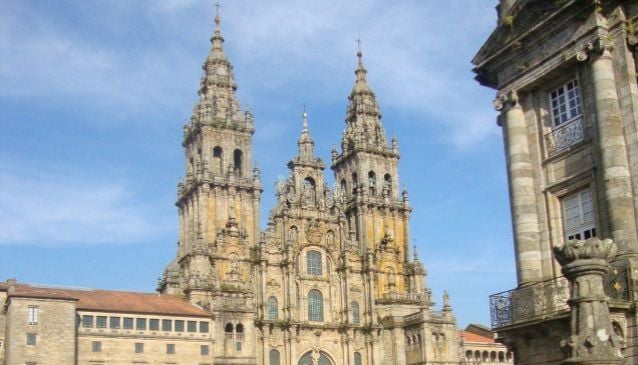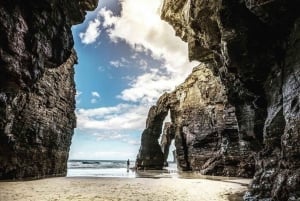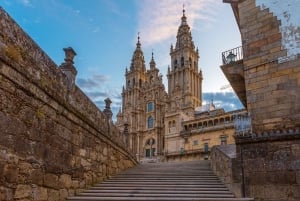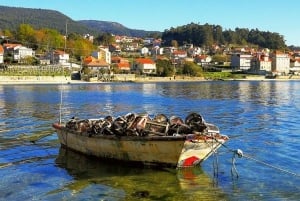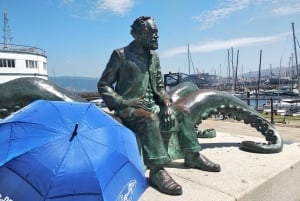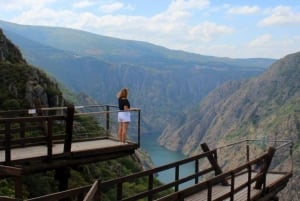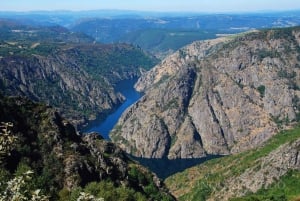20 Things to do in Santiago de Compostela
Inspiration
Whether you are a pilgrim or tourist here's a brief tour of must do things in this majestic city
Book Top Experiences and Tours in Galicia:
If youʻre booking your trip to Galicia last minute, we have you covered. Below are some of the top tours and experiences!
View All Experiences
After a long, hard Camino what better way to finish and arrive in the majestic and walkable Santiago de Compostela. You can get lost in its maze of stone paved narrow streets which make up its Old Town soaking up its special atmosphere with a mix of students,pigrims and local,friendly people. Pilgrims or tourists often ask what can they do in Santiago de Compostela.
There are many options, but if you are pushed for time, it’s best to know what are the best places to see so you can make the most of it. The local Tourist Office (Oficina de Turismo de Santiago) at number 30-32 Rúa do Vilar (which is close to the Cathedral) is worth checking out, as you can find maps, brochures, and information on local events as there is an extensive cultural programme in the city. Remember to take your Pilgrim Passport, student card or other relevant identification as many attractions with an entrance fee offer reductions for pilgrims, students and elderly people.
In between all that walking you will need to eat so the best places include the Rúa do Franco off Obradoiro Square and Raíña where the locals/students go for a wine and tapas.
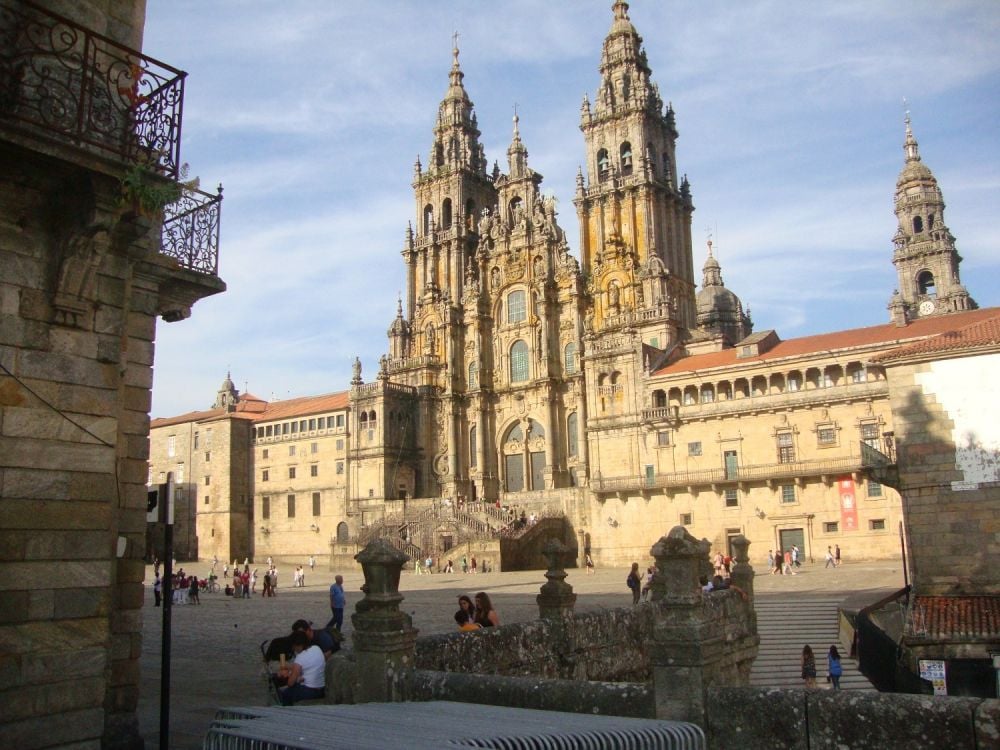
1) SANTIAGO CATHEDRAL/PRAZA DO OBRADOIRO
The majestic Cathedral of Santiago de Compostela and its square Praza do Obrodoiro, lie at the heart of this medieval city. The Cathedral dominates the skyline, mostly due to the fact that no other buildings were allowed to be built higher than the Cathedral’s towers. According to legend, the Cathedral houses the remains of St James the Great, one of the apostles of Jesus. It is most famous for being the destination of a pilgrimage route, also known as the Camino de Santiago, along which pilgrims have travelled for many centuries.
The pilgrimage route has experienced a revival in recent times and in 2012, it is estimated that 198,000 pilgrims received the Compostela, a traditional certificate from the Cathedral. In order to receive the Compostela, the pilgrims had to have travelled - at least - the last 100 kilometres on foot or on horseback, or the last 200 kilometres by bicycle.
If the
Festival of St James which takes place on 25 July falls on a Sunday, that year is recognised as being a Holy Year (Xacobeo). A door known as the Holy Door is opened during this year. At all other times it is kept locked. During the last Holy Year in 2010 approximatley 12 million people visited the Cathedral amongst which were 272,000 pilgrims who received the Compostela. The next Holy Year is not until 2021.
The Cathedral’s construction began in 1075 and is in the Romanesque style, although there were later Gothic and Baroque additions. To learn more about the cathedral’s history, you can partake in an audio tour and rent some earphones.
2) CATHEDRAL MUSEUM
The Museum of the Cathedral was opened in 1930 and it’s here that you can access the Cathedral cloister, in which canons continue to be buried, parts of the original Archbishop’s palace and a balcony on the third floor overlooking Praza do Obradoiro and nearby buildings. The museum is also home to a large tapestry collection and a display of vestments. Valuable church artefacts can be seen in the Treasury.
3) CATHEDRAL ROOF & ARCHBISHOP'S PALACE
There are regular guided visits to the roof of the Cathedral where you can take in the incredible views of the surrounding city and countryside. Make sure you check whether a tour in English is available during your visit. To buy tickets for the guided tour, enter by the door to the left of the stairs leading to the main door of the Cathedral.
4) CATHEDRAL EXCAVATIONS
Recent excavation work has revealed an extensive burial ground under the Cathedral which stretches as far as the High Altar. Scholars now think that the name ‘Compostela’ comes from the Latin ‘compostare’ meaning ‘to bury’.
5) GUIDED TOUR OF THE PORTICO DE LA GLORIA
The ‘Door of Glory’ is the triple-columned entrance to the Cathedral through which pilgrims traditionally arrived. Sculpted in the 12th century by Master Mateo, it is considered to be one of the finest treasures of the Cathedral. The Portico, the high-ceilinged porch area that is attached to the main entrance, has been closed for restoration and is covered in scaffolding at present; however there are
guided tours to examine the design and intricate stone carvings.
6) PILGRIMS' MASS AND THE BOTAFUMEIRO
At midday every day, there is a special mass to welcome pilgrims to Santiago. The Mass begins with the reading of a long list of the nationalities of pilgrims and their starting points and is often attended by priests who have also walked to Santiago on foot. Look out for their boots under their vestments.
Also keep an eye out for the larger-than-life Botafumeiro. ‘Botafumeiro’ means ‘incense spreader’ and is the name of the Cathedral’s resident thurible (a metal device that hangs from chains and in which incense is burned). It was not unusual for large-scale thuribles to be found in cathedrals and churches in the Middle Ages.
The Botafumeiro in Santiago de Compostela is the largest in the world, weighing in at 80 kilograms and reaching 1.6 metres in height. When the Festival of St. James falls on a Sunday, the year in question is recognised as a Holy Year. During the Holy Year, the Botafumeiro is used in all the Pilgrims' Masses. Eight tiraboleiros or incense carriers pull the ropes and the Botafumeiro moves in a swinging motion, almost touching the roof of transept, not to mention reaching speeds of 80 kilometres per hour. All the while, thick clouds of incense are spread over the Cathedral, helping to mask the smells that may be coming from the feet of pilgrims!
7) CORTICELA CHAPEL
If you enter the Cathedral by the door from the Plaza Inmaculada the entrance to the
Corticela is immediately on your left. The chapel was once a separate church but over the years, as the Cathedral expanded, it became a part of the main building. Importantly, however, the chapel still functions as a separate parish church, the Parish of Santa Maria La Antigua Corticela and has its own parish priest. The church is the church of ‘foreigners, pilgrims and people from the Basque country’ and it is here that pilgrims may get married or have their children baptised.
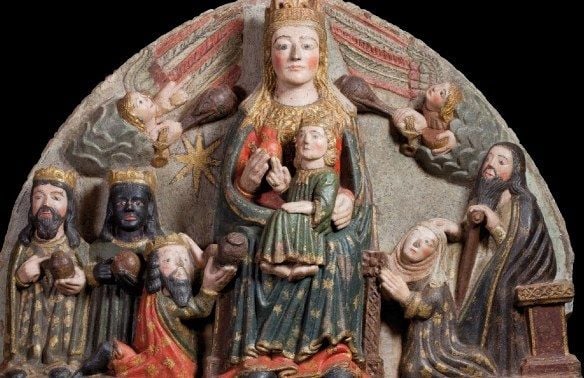
8) PILGRIMS MUSEUM
There are two pilgrims’ museums, both of which have no entry fees. The Museum of Santiago and the Pilgrimages is located at 4, Rúa San Miguel and has information and multi-media displays regarding the history of the local pilgrimage and Santiago de Compostela. The Museum of Pilgrimages around the world contains information on pilgramges around the world and is in Plaza Platerias,near the Pilgrims Office.
9) CHURCH & MUSEUM OF SAN MARTIN PINARIO
The
Church and Museum of San Martin Pinario is a museum that is located in what was once a 10th century Benedictine monastery. It has a magnificent baldicino (a canopy-type structure) over the altar with choir stalls carved in the 17th century. There is also a treasury and portrait gallery
10 CITY OF CULTURE (CIUDAD DE LA CULTURA)
The
City of Culture is is a relatively new addition to Santiago's skyline, appearing like a giant scallop on the outskirts of the city. This complex of buildings includes a museum and library, along with exhibitions and incredible architecture, as designed by the American architect Peter Eisenman. The high cost of the complex has attracted some controversy.
The City of Culture is about 30-minute walk from the Cathedral. Be sure to check in advance what exhibitions are being shown.

11) MUSEUM OF GALICIAN PEOPLE
The Museum of Galician People Museum of Galician People is situated at the Puerta del Camino, where the Camino Francés enters the medieval city. Housed in a former Dominican friary, the museum has an remarkable spiral staircase and features exhibitions on Galician folk culture. Please note that these exhibitions are annotated in Spanish. The nearby church and gardens are alone worth the entrance fee!
12) THE GALICIAN MUSEUM OF MODERN ART
The Galician Museum of Contemporary Art is also located at the Puerta del Camino, right opposite the Museum of Galician People. At the museum you will discover an impressive collection of work from national and international artists. The museum was designed by the Portuguese architect Alvaro Siza. Both the Museums of Galician People and Modern Art are right next to the lovely Bonaval Park which is nice and secluded, a perfect place to contemplate and reflect on the world.
13) EUGENIO GRANELL FOUNDATION
The Eugenio Granell Foundation was created in 1995 and is located on the Plaza Toural, near the Pilgrims’ Office. A hive of activity, the Foundation showcases art from the surrealist painter Eugenio Granell, as well as theatre shows, workshops, chamber concerts, conferences and guided tours. Each exhibit is accompanied by a published catalogue. The Foundation also has a growing library dedicated primarily to art in the 20th century and surrealism.
14) CASA DA TROIA MUSEUM
Santiago de Compostlea is a university city and during term the number of residents is boosted by the burgeoning student population.
The Casa da Troia museum brings this student atmosphere to life as it recreates the famous boarding house run by 'Doña Generosa' at the end of the 19th century. The boarding house was immortalized by the writer Alejandro Pérez Lugín in his novel 'La Casa de la Troya'.
15) PARADOR HOTEL REYES CATOLICOS
Located on the right hand side of the Plaza Obradoiro the
Parador hotel was originally built in 1499 as a hospital for pilgrims. It was only in modern times that the building became the headquarters of the Faculty of Medicine of the University and then a hotel. The building is also home to a museum. Considered by some to be the world’s oldest hotel, the tradition of providing hospitality is continued as the hotel provides three free meals per day to the first 10 pilgrims who queue with their Compostela in hand.
16) COLEGIATA DO SAR
The
Church of Santa Maria de Sar sits by the river of that name. It is the oldest parish church in Santiago and its construction began in the 12th Century. This beautiful church boasts a cloister and museum and is open daily for visits.
17) SAN FRANCISO AND HOLY LAND MUSEUM
Only a few minutes away from the Cathedral lies the monumental church and monastery of
San Francisco. Originally housing a community of Franciscan friars,the 13th Century building is now home to the 4* hotel
San Francisco Monumento. The friars now reside in modern but simple accommodation. Also part of the building has a
magnificent museum of the Holy Land, the heart of which is an impressive model of the Holy Sepulchre which was crafted in Jerusalem over 60 years ago by Franciscan Fray Bartolome de las Heras-Burgos.
18) ALMEDA PARK (PASEO DA FERRADURA)
The city´s most renowned viewpoint is that of
Paseo da Ferradura, located in Alameda Park, on the eastern slope of the Santa Susana hill. Here you will be treated to a spectacular view of the Cathedral rising up majestically over the mass of historical building. A visit to the Paseo da Ferradura is a must-do when you visit the city and can be visited at any time of day, although visiting at night will allow you to really understand why the Cathedral was and is a spiritual beacon.
19) MONTE DE GOZO
Monte de Gozo or the ‘Mountain of Joy’, is an elevated area from which pilgrims can get their first glimpse of the Cathedral of Santiago. The resident chapel there dates back to 1105 AD and nowadays it is joined by a number of facilities designed for pilgrims, such as a restaurant, coffee shop, laundry and shelter. At times, concerts are also performed here. If you want to walk the last stage of the Camino Francés from Monte de Gozo you can get the bus to the airport and ask them to let you off there.
20) ROUTE OF ROUTES
You can see all of these places and more by downloading the
guide to a one or two day walk which traces the entrance of the various Camino routes into the city. The route also includes a visit to Monte Pedruso, which sits high above the city and provides some wonderful views of Santiago and the surrounding countryside.
Read more from the author at johnniewalker-santiago.blogspot.com.es/





